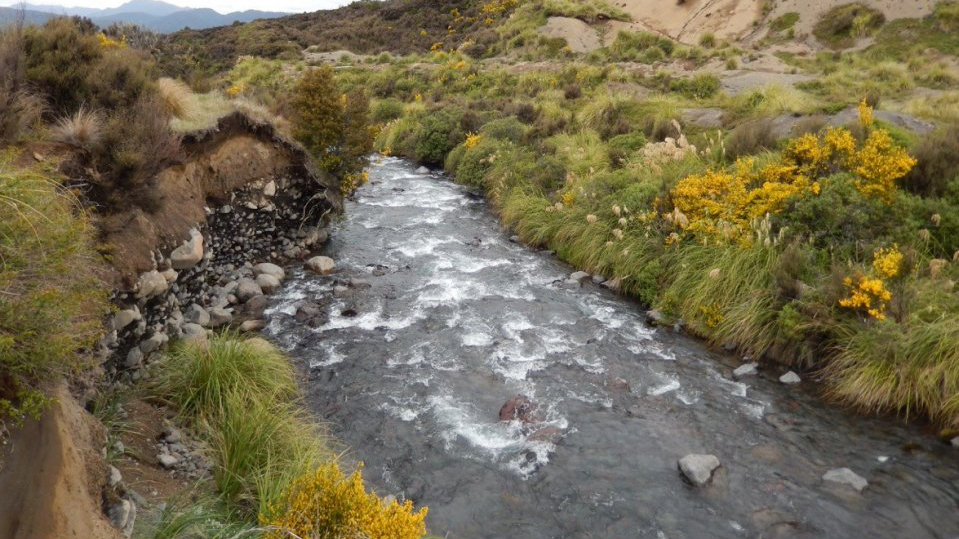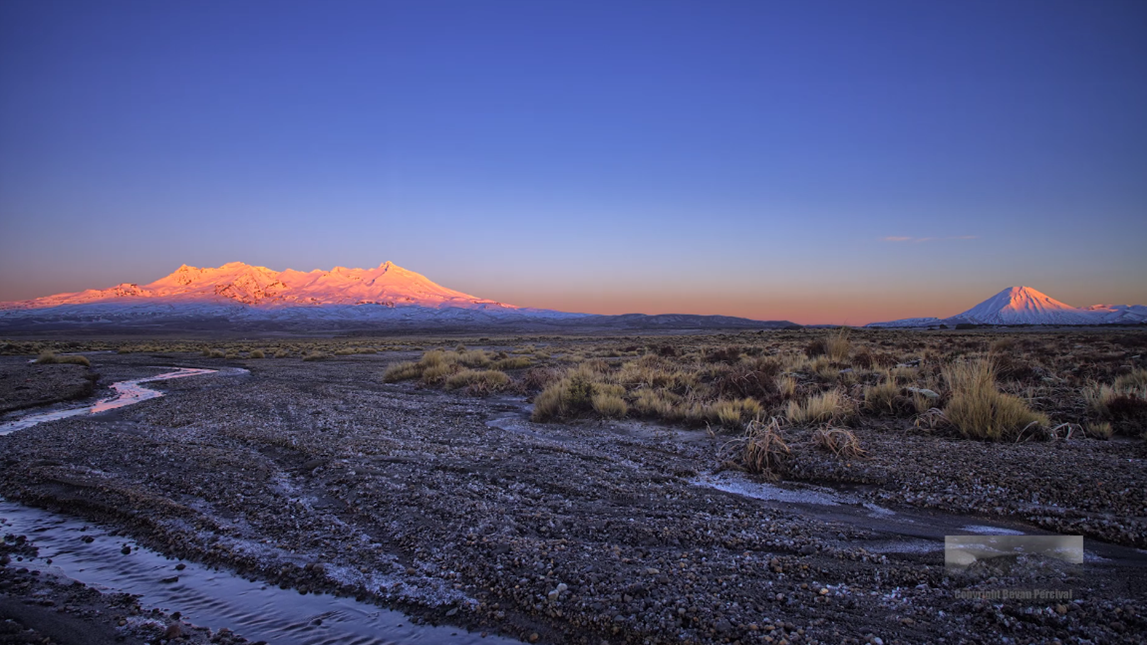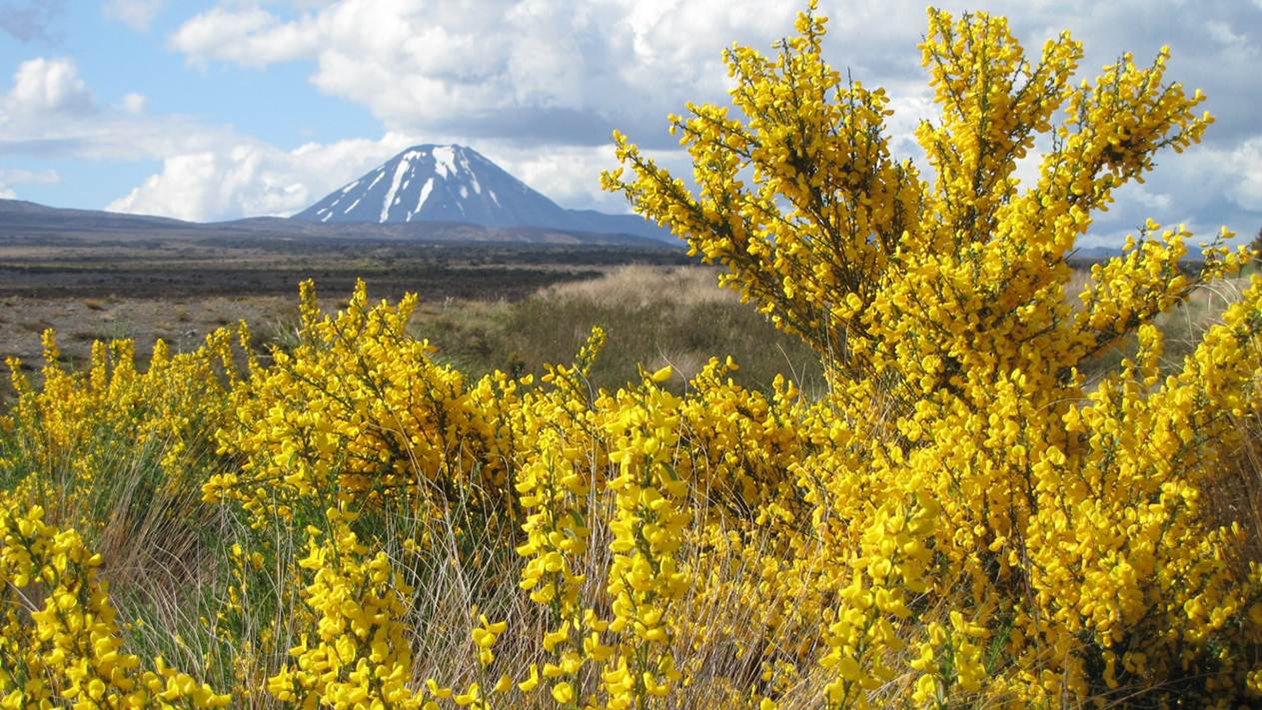What is Project Yellow?
The Desert Road stretch of State Highway 1 running through the Central Plateau provides expansive vistas of three spectacular mountains as well as of unique mix of tussock and forest, making the drive a truly memorable experience.
Sadly, the view and, even worse, the integrity of the fragile ecosystem that attracts trampers, hunters and photographers is being threatened by the increase in abundance and spread of invasive exotic plants. The yellow peril of gorse, lupin and broom are on the way to reaching a critical mass that will permanently modify this landscape.
These plants change the fertility of the naturally nutrient poor soils, encouraging other introduced plants and grasses and thereby compounding the problem. Broom produces chemicals that prevent native seedlings establishing and then forms dense thickets able to shade out all other regenerating plants. This can occur from the road edge right to the snow line. Imagine a white mountain sticking out through a sea of yellow weeds?
To arrest this spread and protect this magnificent place, a collective of the organisations that manage land in a 23,000-hectare chunk of the plateau are working together.
Known as the Desert Rd Invasive Legume Control Group, their mission statement is:
“The unique natural environment, iconic vista and cultural significance of the Desert Road area is protected from invasive legumes.”
To achieve this mission, the Desert Rd Invasive Legume Control Group has created a Memorandum of Understanding to guide planning and operations over the next 10 years. The group’s core intent is:
- co-operation to achieve – between all stakeholders
- introduced legumes are eradicated
- monitoring – to ensure success
- advocacy – to engage more stakeholders
- pathway management – to protect the asset of what’s been controlled.
Partner organisations
Project Yellow boundary map

Change in legume density over the project
 Broom growing by a Desert Road stream.
Broom growing by a Desert Road stream.
Papers on Rangipo Desert ecology and the significant impact of legume invasion
Technical papers and reports are available for you to read, below.
-
Desert Road Study - Remote sensing guide management strategy for invasive legumes on the Central Plateau, New Zealand
11 MB
-
Predicting native plant succession through woody weeds in New Zealand
2.3 MB
-
Acacia saligna’s soil legacy effects persist up to 10 years after clearing: Implications for ecological restoration
399 KB
-
Barriers to ecosystem restoration presented by soil legacy effects of invasive alien N2-fixing woody species: implications for ecological restoration
364 KB
-
North Island seral tussock grasslands 1. Origins and land-use history
1.9 MB
 Let's make sure the unique natural values and vistas of the Desert Road environments are preserved.
Let's make sure the unique natural values and vistas of the Desert Road environments are preserved.



